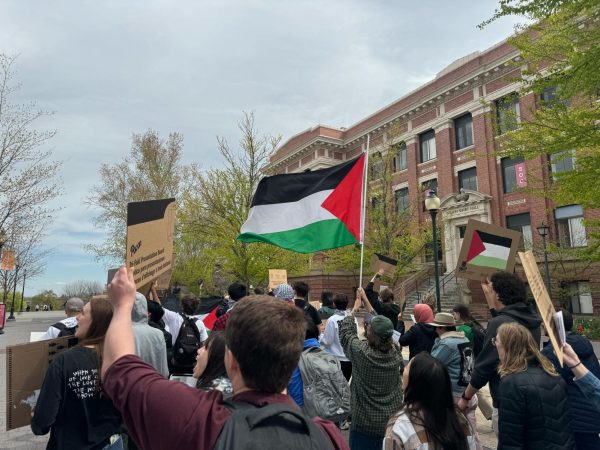Panhellenic elections: A step by step process
October 31, 2014
One week after the Interfraternity Council announced its nine leaders for 2015, the Panhellenic Council is days away from announcing their own lineup.
Nine women will be informed of their positions Monday night at 8 p.m. by the Panhellenic Council. These positions were selected by a democratic election that is similar to IFC’s, which took place last week, but differ in construction.
Madi Phillips, President of the Panhellenic Council, said the basis is similar. A committee of Greek members generates slates, or lists of candidates, that are voted upon.
However, the similarities stop there.
“The women’s process demands more from the community,” Phillips said.
Several weeks before the election, the Panhellenic Council selects 14 sorority women to compose the committee that generates slates. Of the 14 women on the slating committee, there is 1 representative from each of the 13 sorority chapters on campus and 1 Panhellenic representative.
The composition of the slating committee has not changed in several years, said Megan Nelson, the Panhellenic Council Vice President of Finance and Administration. She oversees the current slating committee.
Revisions to bylaws established by the Council were made during this election, however, to validate the process.
“The revisions weren’t formally written before we made them,” Nelson said.
The majority of these chapter representatives are chapter presidents, Phillips said. This is because the requirements for a representative include a leadership position within the Greek community, involvement with the Panhellenic Council, and junior or senior class standing.
A week before the election, the delegates meet and interview potential candidates.
Interviews took place on Oct. 19 this year in three rooms reserved within the Compton Union Building (CUB). Each room contained four to five delegates who, as one collective unit, interviewed four to five potential candidates.
This interview process serves the purpose of eliminating people unfit for the position, said Phillips. Community involvement, leadership positions, and grade point averages are some of the requirements reviewed.
The first round of chapter slates is structured to have a maximum of three positions nominated per individual member on a slate. This is compiled before the first election event, which is Speech Night.
During the speech night, which took place on Oct. 28 this year, candidates made a case for their desired position.
During each Panhellenic election event the entire council, as well as the election committee, is required to be present. An additional 8 members from each sorority chapter are required to be there, too.
This differs with IFC, as attendance is optional. The events are open to the public and not a requirement.
Despite this, fraternity men do attend election events, said IFC election delegate Bobby Poulton. During this year’s speech event, brothers were in attendance with guests outside of the Greek community alongside them.
“ASWSU delegates showed up,” he added.
The second round of Panhellenic chapter slates, presented after Speech Night, are structured to have a maximum of three nominations with each position.
A question and answer event, which was hosted on October 30 this year, follows several days later. This question and answer session consists of each remaining candidate being asked five questions.
The questions are divided accordingly: one from the committee about strengths and weaknesses, two from the committee based on the slate, and two from community members in attendance.
The two questions based on the slate are flexible. Phillips gave an example of how the questions might differ based on circumstance.
If a woman is slated for two different positions, such as President and Director of Finance and Administration, she has the permission to address only one criterion for both of her questions, Phillips said.
However, if the woman would like to address both, she can answer one for finance and one for the presidency.
After the question and answer event, a third slate is released. This narrows down a majority of the remaining candidates.
The election committee then casts their votes. During this vote, the Panhellenic Council representative does not participate.
Once the votes are collected, a majority vote of seven is needed for an individual to secure a seat. Should the situation of a tie occur, the Panhellenic representative will step in and give a tie breaker vote.
There is no additional influence outside of the election committee.
Panhellenic Council’s 2015 lineup of leadership will be announced on Monday at 8 p.m. said Phillips.




















